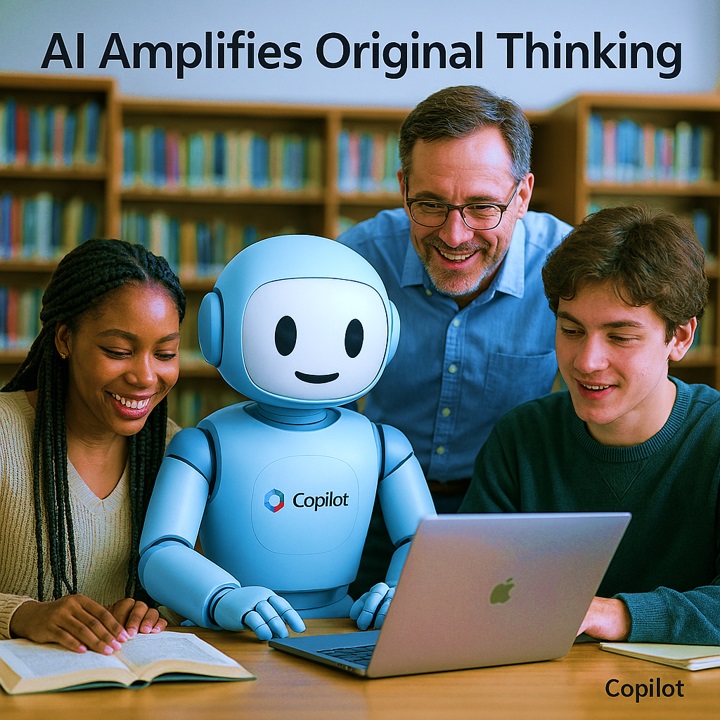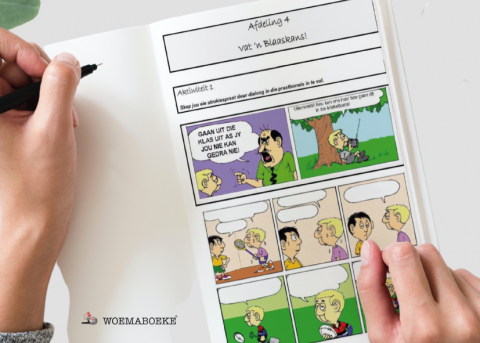The South African Schools Collection PR
AI In The Classroom – Reflections & Realities
A previous article focused on AI in teaching – this article shares classroom experiences
“Each interaction with AI supports essential skills: communication, literacy, listening, critical thinking, safety, teamwork, and personal growth.
“Rather than teaching these skills in isolation, properly guided AI use weaves them together in meaningful, real-time learning experiences.
“These moments are not just about technology. They are about empowering students to think clearly, collaborate kindly, and engage confidently with the world around them.”
What we focus on
This article will highlight feedback from a Grade 4 to 7 teacher and her students, as well as from Grade 6 pupils at a remedial school – inclusive of students with ADHD, dyslexia, and autism.
“These students completed their first research project on the black-footed cat, using AI as a supportive tool to gather information. Their experience highlights how AI can scaffold learning for diverse needs, fostering independence and curiosity,” explains Jil.
We also hear from Janet, who is the skills for schoolwork and coding teacher at a school known for innovation and student well-being. As part of the Knowledge Network beta testing programme, Janet tests lessons on new technologies like AI, Python, Small Basic and others, before rolling out to more schools.
We conclude this article with insights from a teacher at a bring-your-own-device school, where students use whichever device they have on hand. Although the school maintains a strict no-smartphone policy during regular hours, it allows students to use their smartphones as tools during integration classes and exams.
Early encounters with AI
According to their teacher, the Grade 4 to 7 classes experienced their first AI lesson:
“Their reactions varied from excitement, curiosity to amazement and wonder. I emphasised we do not need to be afraid of AI if we use it correctly and responsibly. The students were fascinated by the idea that machines can ‘think’ or make decisions, even though they had some pre-knowledge of what AI was. Initially many students said the general fear about AI was that ‘it would take over the world’. Overall, the lessons generated an enthusiasm amongst students to go home and use their newly taught skills further.”
The positive feedback from the students in her classroom included: “AI is the best thing that I have experienced, and it really helps me find facts faster.”
And: “AI is super fun to use, and I think it’s a great alternative to regular learning and I will use this way more.”
Grade 6 students from a remedial school share their experience
“It was fun. I used Copilot to help me get information on the black-footed cat and to get pictures. Copilot was useful. It was a good project.”
“Honestly, I had never heard of these cats until I did this research. I find these cats really cute and think it is quite sad these little kitties are vulnerable. I used Copilot. I asked Copilot for information about the black-footed cat, where it got the info from and to show me how the cat looked.”
“My opinion is that the black-footed cat is extremely clever and shy. I used Copilot for information.”
Janet’s journey – from IT foundations to AI fluency
While the black-footed cat project showcased how AI can support diverse learners in their first research experience, other schools are building on years of digital integration.
Janet, a teacher at a way-up-north school known for innovation and student well-being, reflects on how her students progressed from foundational IT skills to confident use of AI, highlighting what’s possible when digital literacy is nurtured over time.
“My school has been part of the Knowledge Network (KN) family for years, using the PLP (ILAMM) programme to build strong digital foundations,” says Janet.
“From Word and PowerPoint to Excel, our learners are not just playing with tech – they are mastering it. By Grade 7, they can confidently put together a slick presentation, create polished documents, insert charts from Excel, and reference their own research (no more ‘I just found it online!’).”
She continues: “This year, we have added a modern twist: AI! Learners are being introduced to artificial intelligence in a fun, responsible way – asking good questions, thinking critically, and using it to boost their creativity. Five years ago, we added coding to the mix, starting from scratch – literally – with Scratch Jr. Today, learners are designing their own animated sprites (characters) in PowerPoint, uploading them into Scratch 3, and coding their animated movement.
“Coding days bring equal parts frustration and excitement, but there is nothing better than hearing ‘It works!’ echo through the classroom. We are proud of the digital confidence our learners are building. They are not just ready for high school – they are ready for a digital future.”
The ILAMM methodology used during classes challenges, extends, and develops students without overwhelming them.
By equipping students with coping skills, nurturing confidence, and gently raising the bar, it encourages students to elevate their own standards, work ethic, and results.
High school integration – adapting across devices
“The first thing students learned was no matter which device they have, with their own skills and work they can score outstanding results in research projects. Students were exposed to Gemini for the first time on their smartphones, tablets, and laptops,” says a teacher from a secondary school with a bring-your-own-device model.
“They learned that out of all the skills needed for thorough, verified research, specific, and carefully thought-through communication with AI is the most important, especially when using AI in a language that is not your strongest.
“Teacher-led AI use integrates skills often taught in isolation. These include real-time communication, critical thinking, language, grammar, tone, verifying sources, and citing styles.
“As well as website terminology, generating a meaningful, cross-checked bibliography, netiquette, online image, original thinking, academic integrity, and teacher collaboration.”
Knowledge Network founder Jil Hrdliczka concludes:
“Across these classrooms, AI is amplifying original thinking. When guided by skilled teachers, students learn to use technology not just to find answers, but to ask better questions.”
SOURCE ACKNOWLEDGEMENT
Originally published in the August 2025 issue of The Mighty Pen EDUCATION magazine: written by founding editor, Janos Bozsik. With Copyright permission from Janos Bozsik, Editor, The Mighty Pen EDUCATION magazine.





